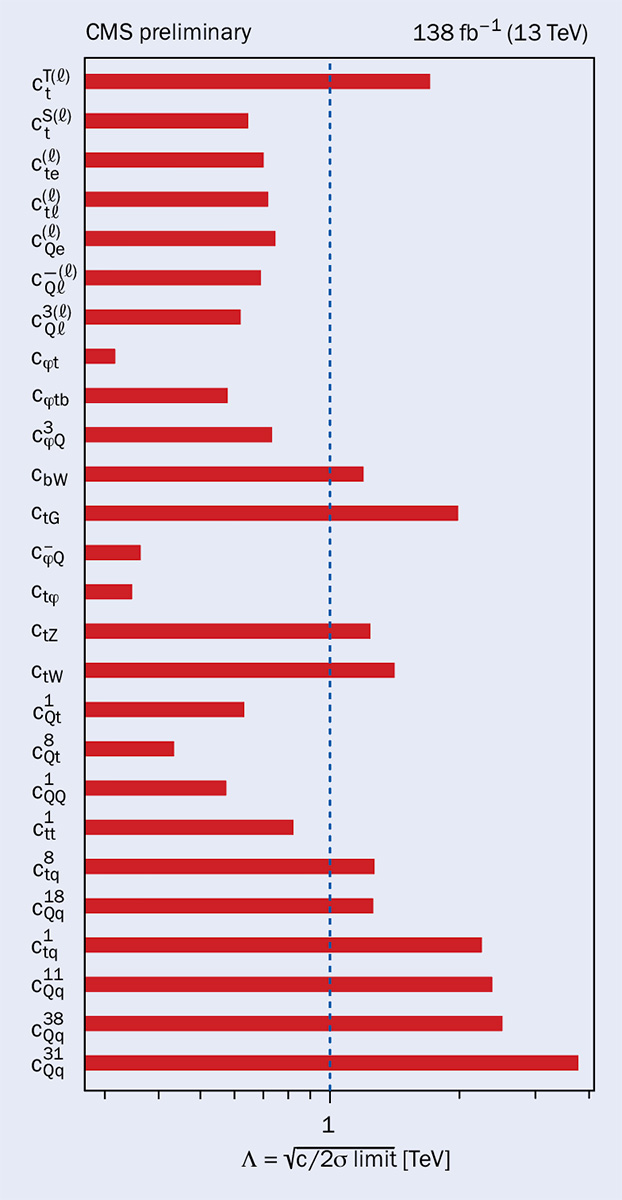A report from the CMS experiment.

Despite its exceptional success, we know that the standard model (SM) is incomplete. To date, the LHC has not yet found clear indications of physics beyond the SM (BSM), which might mean that the BSM energy scale is above what can be directly probed at the LHC. An alternative way to probe BSM physics is through searches of off-shell effects, which can be done using the effective field theory framework (EFT). By treating the SM Lagrangian as the lowest order term in a perturbative expansion, EFT allows us to include higher-dimension operators in the Lagrangian, while respecting the experimentally verified SM symmetries.
Operators
The CMS collaboration recently performed a search for BSM physics using EFT, analysing data containing top quarks with additional final-state leptons. The top quark is of particular interest because of its large mass, resulting in a Higgs–Yukawa coupling of order unity. Many BSM models connect the top-quark mass to large couplings to new physics. In the context of top quark EFT, there are 59 total operators at dimension six, controlled by the so-called Wilson coefficients, 26 of which produce final-state leptons. These coefficients enter the model as corrections to the SM matrix element, with a first term corresponding to the interference between the SM and BSM contributions, and a second term reflecting pure BSM effects.
The analysis was performed on the Run 2 proton–proton collisions sample, corresponding to an integrated luminosity of 138 fb–1. It obtained limits on those 26 dimension-six coefficients, simulated at detector level with leading order precision (plus an additional parton when possible), exploiting six final-state signals, with different numbers of top quarks and leptons: ttH, ttℓν, ttℓℓ, tℓℓq, tHq and tttt. The analysis splits the data into 43 discrete categories, based primarily on lepton multiplicity, total lepton charge, and total jet or b-quark jet multiplicities. The events are analysed as differential distributions in the kinematics of the final-state leptons and jets.

A statistical analysis is performed using a profiled likelihood to extract the 68% and 95% confidence intervals for all 26 Wilson coefficients by varying one of them while profiling the other 25. All the coefficients are compatible with zero (i.e. in agreement with the SM) at the 95% confidence level. For many of them, these results are the most competitive to date, even when compared to analyses that fit only one or two coefficients. Figure 1 shows how the 95% confidence intervals (2σ limit) translate into upper limits on the energy scale of the probed BSM interaction.
The CMS collaboration will continue to refine these measurements by expanding upon the final-state observables and leveraging the Run 3 data sample. With the HL-LHC quickly approaching, the future of BSM physics searches is full of potential.
Further reading
CMS Collab. 2023 arXiv:2307.15761.








